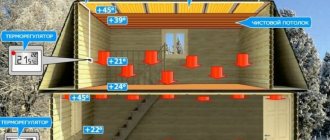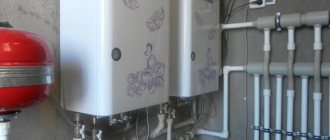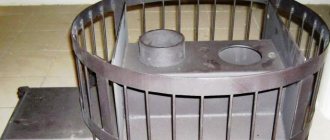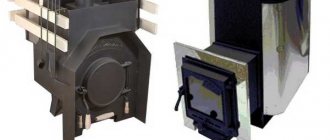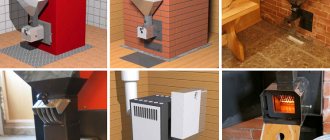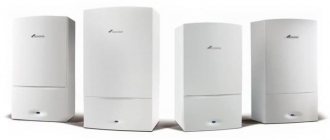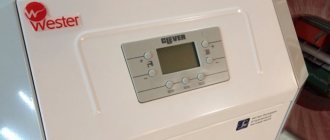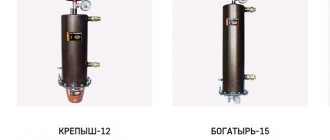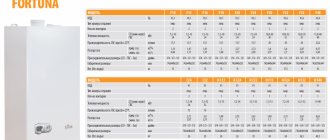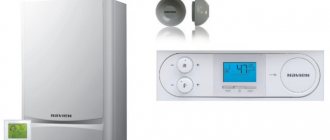Characteristics of film infrared heating on the ceiling
Infrared ceiling heating is a film sheet, inside of which heating elements are located. At the moment when electricity is supplied, this film will heat up to +45 ° C in a matter of minutes. Infrared waves are transmitted in the same way as sunlight. After the decorative ceiling covering is heated, the heat will be directed to the floor, from which it will subsequently be reflected.
Thanks to ceiling-mounted infrared film devices, not only the air in the room will be heated, but also the existing furniture. Thus, heat will constantly accumulate in the living room, which will subsequently be given off from the surface of objects.
In a room at a level of about 1-1.5 m, it is necessary to install a thermostat, thanks to which the operation of the infrared film heater system, which is mounted on the ceiling surface, will be adjusted.
As a rule, the owner of a residential premises independently sets the level of the desired temperature regime. The moment the set temperature level is reached, the infrared ceiling heater stops working. It should be taken into account that after the equipment stops operating, the process of maintaining the set temperature regime will be carried out. Thus, each time after switching on, the infrared film ceiling heater will operate from the electrical network for about 10 minutes.
Among the technical characteristics, it is worth highlighting the following points:
- the width of the film web can vary from 0.5 m to 1 m;
- maximum thickness is 1.2 mm;
- maximum temperature heating of installed elements – +50 °C;
- required voltage – 220 V;
- weight 1 sq. m of infrared film heater is 50 g.
Many people believe that by installing this type of heating, the floor surface will be constantly cold. It is important to understand that by heating objects, the lack of heat near the floor will be compensated.
ORIENT heating film
| The cotton-based film heating system - ORIENT, ensures fast, uniform and safe heating of surfaces and rooms. Certified for the Russian Federation and EU countries. from 550 rub. |
| Supplier Heating film ORIENT - Novoe-Teplo LLC is the exclusive distributor of OWELL ENERGY Co., LTD. on Russian territory. ORIENT heating film, Menred thermostats, HOT-ART decorative heating pictures. |
Buy "ORIENT heating film" in other cities
Heated electric floors in screed up to 2.7m2 - 270W 18m. Warm solutions from Teplokabel-Chelyabinsk
Warm floors under laminate 16.0m2 - 2560W. Warm solutions from Teplokabel-Chelyabinsk
Large selection of products from TechSoftTorg. Only sales directly from the manufacturer. TechSoftTorg specialists are always ready to advise you.
Film heating system or heated floor
A winning offer on the Kyiv market. We will deliver all your purchases free of charge. Everest Trading House specialists are always ready to advise you.
DOUBLE-CORE!! Heating mat 0.5 x 10.0 m (5.0 m2), wire length 62.5 m. Mat power 750 W.
Heated electric floors in a “screed” for an area of up to 4.6m2 - 510W 9m. Warm solutions from Teplokabel-Chelyabinsk
Warm floors and anti-icing systems ArnoldRak made in Germany
The unique properties and high quality of our product allow us to carry out not only dry installation under laminate, carpet, parquet or boards, but also under tiles, tiles and porcelain stoneware, using tile adhesive.
Infrared floor
Types of ceiling film infrared heaters
If we consider the types of infrared film heaters that exist today, they can be divided into 3 groups depending on the mounting method:
- ceiling models;
- wall models;
- floor models.
Depending on the wavelength and temperature radiation, infrared films are:
- low-temperature - household models of heaters that heat up to +10 °C - +60 °C, the emission length of infrared waves varies from 5.6 microns to 100 microns;
- medium temperature - in this case, the temperature range is +60 °C - +100 °C, while the wavelength ranges from 2.5-5.6 microns;
- high-temperature - the temperature range exceeds +100 ° C, the radiation of infrared waves is 0.74-2.5 microns.
At the moment, ceiling heating elements are the most popular. Such models can be used as an additional or main heat source. It is quite difficult to reach such elements, which eliminates the possibility of getting burns, especially if there are small children in the house.
If the installation work is carried out correctly, the process of heating the ceiling surface will be uniform. Thanks to the attractive appearance of modern models, infrared ceiling heaters will only complement the interior design.
Advice! If necessary, you can install a ceiling PLEN in a living room.
Ceiling heating PLEN
Warm ceiling PLEN has a number of significant advantages:
- since the device runs on heating electricity, energy costs are minimal;
- a distinctive feature is a high level of reliability and a long service life - the conductors are sealed in film, the design is completely free of wearing elements;
- PLEN can be installed under a coating of any material; its installation does not require much space;
- Thanks to the automated system, it is possible to set any temperature regime.
It is worth paying attention to the fact that the work is carried out silently, with no heat losses at all. The manufacturer provides a warranty of up to 25 years, the service life is 50 years. During operation, ceiling heating does not require maintenance.
Reviews about PLEN
During the installation process, I highlighted a solid list of the obvious advantages of this system.I compared PLEN heating with a traditional water heating system.
That is, one that includes a boiler (gas, solid fuel, electric) and pipes with batteries running to each room.
So, the advantages of PLEN:
1. I installed it myself, without anyone else's help. It took me two weekends to complete one room with an area of 11 meters. Tools - saw, screwdriver + screws, knife. Basic knowledge of electrical wiring. That is, he knew what a socket and a light bulb were, and learned the rest in the process.
2. Installation in installments. I really liked the opportunity to install PLEN not all over the house at once (this seemed risky), but in parts. First I installed PLEN in one room (to see how it would work). Later I will install it in another, third, etc.
From the point of view of savings, this is also important - you don’t need to take out a loan or borrow money, you can do everything gradually.
This will not work with water heating - the system must be designed, installed and run simultaneously throughout the house.
3. Manufacturer's warranty - 10 years (specified in the contract). Although it is written everywhere that it lasts at least 25. But this is understandable, because no one has yet been able to verify these terms - the technology is too “young”. Although, in terms of operating conditions, an analogy can be drawn with simple electrical wiring, which lasts up to 50 years.
4. Maintenance free. I installed it and forgot about it, just like the electrical wiring.
5. No approvals, projects and connections, papers, waiting, queues and other red tape, which is inevitable for all happy owners of gas heating - no need! And so in our country there is enough of this.
6. Comfort. The warmth is very pleasant. When you walk into a room, you are literally enveloped from all sides. The floor is a little warm, it’s not cold to walk barefoot. The heating is uniform, and as a result - no drafts!
7. Versatility. PLEN can be installed anywhere, you only need two things - the ceiling and electricity! Well, and also warm walls. No need to pull batteries!
8. Cheap on par with gas heating (but the system does not need to be maintained).
9. Dust is 10 times less than from batteries (according to manufacturers), which is quite plausible. As I understand it, this is because there is no circular air circulation throughout the room, as with radiator heating. For allergy sufferers this is very important, and cleaning can be done less often.
10. The technology is completely safe for health. Many people doubt whether the rays are harmful. As I found out, they are not harmful, the radiation spectrum of PLEN is approximately the same as that of the human body. Another great analogy for infrared heating is a Russian stove. The tongue will not dare to blame her for harm to health. Similar to the previous point - quite plausible.
11. The operation of IR heating improves immunity (also according to manufacturers’ information). IR radiation heats the surface of the body, which activates superficial blood vessels. And this is oh-so good for the immune system. As a former biologist, I trust this information. Therefore, let's improve our health)
12. The system cannot be “frozen”. Infrared heating can be left on for any time in the winter, or turned off altogether. With water heating, such a trick will not work in frosty weather - you need to drain the water or pour antifreeze into the system (and this is oh so expensive and dirty).
And even a water heating system with gas automatics is quite dangerous to leave unattended. A gas boiler is usually started with electricity. What if it’s turned off or the traffic jams blow out? It’s scary to even imagine what will happen if the water in the system freezes...
In general, IR heating rules here too.
13. Space saving. PLEN is installed on the ceiling. It took me 3 cm of ceiling height. How much usable space will the installation of batteries steal in a house with an area of 100 m2? I estimated that more than one square meter of the battery plus the pipes around the perimeter are also more than a meter plus the area of the boiler room. Of course, not much, but still this saving on living space is pleasant.
And if we consider that the cost of building one hypothetical square meter of housing starts at 10 thousand rubles, it’s even more pleasant.
14. High heating rate. Just 15-20 minutes is enough to raise the temperature from 15 to 22 degrees.
15. The temperature in each room and in any other room is constant, set using a thermostat. With water heating, it is more difficult to avoid temperature “jumps”; these systems have a much greater heating and cooling inertia, even with “fashionable” thermostats on radiators.
16. Additional savings can be achieved by lowering the temperature when the owners are away from home. To do this, programmable thermostats are installed that will maintain the room temperature only while the owners are present.
For example, from evening to morning on weekdays and around the clock on weekends. The rest of the time the minimum temperature will be maintained (for example, 10 degrees). In addition, it has already become possible to turn on and off the PLEN remotely, via a cell phone (by sending an SMS command).
17. I remembered another undeniable advantage: maintaining cleanliness during installation. I didn’t have to drill, drill, or chisel anything (although I installed it on a concrete ceiling). But all this is inevitable when installing batteries and laying pipes around the house. In general, there were no clouds of dust, broken bricks or other debris. While I was installing the PLEN, a child was sleeping in the next room.
I have discovered approximately these benefits for myself from installing PLEN. I think everyone can draw their own conclusions.
The question remains: does the technology have any disadvantages?
Having described in detail all the advantages of the PLEN heating system, I consider it necessary to mention the difficulties that I had to encounter during installation.
I will say right away that there were few of them.
1. The electrical wiring at the connection point was very hot.
The reason was the following - I used a thin wire - 1.5 mm instead of the required 2.5 + insulated with electrical tape.
As a result, the wire at the connection point became very hot and it was scary to leave the system on when we were leaving (it would suddenly catch fire).
I replaced the wire with 2.5 mm, insulated it with heat shrink and the problem disappeared.
2. The maximum electrical power is high if you install PLEN throughout the house.
I calculated that if heating is installed throughout the house, the total power of the system will be 15 kW (120 m2).
And my house is allocated only 6.6 kW. It would seem that the problem puts an end to the installation of PLEN in the house.
Or it is necessary to increase the allocated power to at least 20 kW. And this is again technical specifications, projects, approvals, replacement of wiring, delivery, etc.
But a simpler and more elegant solution was found.
As you know, PLEN in each individual room works only 6 minutes per hour. Therefore, God himself ordered to turn on different rooms in turn, and not all at once.
Technically, this is possible thanks to the installation of a heating system control unit (costs 6.5 thousand rubles).
The principle is this.
The entire heating system in the house is divided into 4 zones. All 4 zones are connected to the control unit, which turns them on one after another, in turn.
Thanks to this, the peak power of the entire heating system is reduced by 4 times! And if the power of all panels is 15 kW, then simultaneous consumption will be no more than 3.75 kW.
This is how you can easily and painlessly bypass the problem of high PLEN power (as well as low allocated power).
3. Economically, but with the condition...
For 2 months of operation, I paid for electricity approximately 750 rubles per month for a heated area of 19 m2. Although there was no severe frost outside and I still heated the house with firewood.
By the way, with an estimated consumption of 20 W per m2 per hour on average for the heating season, I should have received about 450-500 rubles per month (with the same 19 meters).
So, are manufacturers lying about high efficiency?
As I found out, not at all.
The declared average of 20 W per square meter per hour is achieved under one condition. If the building complies with SNiP 02/23/2003 “Thermal protection of buildings”. And the requirements of this SNiP are quite serious. For example, a brick wall must be almost 4 meters thick to meet these standards.
As a true heating engineer, I calculated that the walls of my house are about 50% below the standard, i.e. not warm enough. So much for the difference in electricity bills)
I decided that the walls needed to be insulated with another layer of insulation to comply with SNiP. I'll be doing this next year. I think further - investments in insulation (about 12,000 rubles) will pay off in 2 years.
As you can see, all the “disadvantages” of PLEN are completely removable. Unfortunately (or rather, fortunately) I didn’t find any others.
But just in case, I compiled a list of possible doubts that people may have when getting acquainted with PLEN.
So…
1. “Is it really warm?” This is exactly the question that faced me right up until the moment I turned the system on to the network. Indeed, logically, heat rises from bottom to top, and here the panels are at the top...
Now I can say with confidence - the system is heating up! And I’ll tell you how warm it is! And what’s especially pleasing is that it’s warmer below than above.
2. “Isn’t this harmful?” My answer to this question is this: the very fact that PLEN was allowed to be used in kindergartens already speaks volumes. After all, building codes and requirements for children's institutions are much more serious than for ordinary buildings. So here I am, I fully trust the domestic certification system, which allowed infrared panels into kindergarten.
3. “How long will it last? And won’t the ceiling catch fire from the heater?”
I will answer - the service life of PLEN is the same as that of electrical wiring (tens of years).
And the ceiling will not catch fire if installed professionally. Using the “right” wires of the right cross-section, connecting them well and insulating them.
4. “What if the electricity goes out?” Here, of course, nothing can be done. But most modern gas boilers are also completely dependent on electricity. In addition, outages do not happen so often. Although it still wouldn’t be superfluous to have a stove or boiler at home. That is why I am in no hurry to demolish my water heating.
5. “Yes, combustion of fuel is not used for heating, but electricity is used. But electricity at a power plant also appears when fuel is burned (gas, coal, fuel oil). That is, for the environment there is no difference - a boiler or a PLEN.”
My answer is this: PLEN is in any case much more versatile than any boiler. After all, he only needs an outlet. And the electricity in this outlet can already be generated not only by burning fuel, but also in other ways. For example, at a hydroelectric power station or at a nuclear power plant.
It is very important that PLEN can be used from any alternative energy sources - solar panels or wind turbines. And then there will be no talk of any harm to nature at all.
What other modern heating technology can boast of this?
Well, it's time to draw a general conclusion from everything that has been said today.
So, PLEN is more effective than wood heating: it is a move away from water heating (no need for a boiler room), cleaner, chopping wood, burning it and damaging the air.
More efficient than gas: safer, MUCH easier to install, connect and operate
More efficient than electric heating: SEVERAL times cheaper, again - avoiding water heating
More efficient than a diesel boiler: everything is the same + no need to carry diesel fuel, bury containers for it, or breathe in toxic exhausts
All disadvantages of PLEN are completely surmountable, and the system can be used directly from alternative energy sources. And this is a matter of the near future.
Therefore, we can safely call this technology super-rational and super-efficient.
Undoubtedly, it is the future.
Installation of infrared ceiling film
In the event that this system will act as the main source of heat, it is recommended to first attach mats to the surface, which will occupy about 80%. If an infrared ceiling heater is used as an additional heat source, then it is enough to install mats on 30% of the total area of the entire ceiling surface.
Before starting installation work, you must first correctly calculate the power level of the heating elements. Thanks to the power calculation, it will be possible to select a thermostat. For example, a thermostat consumes 4 kW per square meter. m of film accounts for 0.2 kW. In this case, the surface area should be up to 20 square meters. m.
After this, they proceed to the installation of thermal insulation materials. If you plan to install an IR heater in a multi-story building with a concrete floor, then heat loss can be prevented thanks to thermal insulation. In wooden houses, thermal insulation prevents heat dissipation and, as a result, drying out of the wood.
For insulation, you can use foamed polystyrene, which is covered with a layer of foil on one or both sides. The material should be attached to the ceilings using refractory dowels for this purpose. It is recommended to seal the joints with foil tape. Only after this can you begin to install the film ceiling heater.
When attaching the infrared film sheet, you must first step back about 35 cm from the walls along the entire perimeter. A distance of up to 5 cm should be left between the strips. The infrared film should be located on the ceiling surface parallel to each other. During the work, it is recommended to follow a special scheme, according to which heating elements should not be located above sleeping places and electrical appliances.
After all the elements have been secured, it is worth checking the functionality of the system. To do this, you need to connect the terminals to the copper busbars and clamp them tightly using pliers; the connection points must be reliably insulated.
To connect infrared film sheets to each other, electric copper wires are used, which have a minimum cross-section of 2.5 square meters. mm. If necessary, the wires can be disguised; to do this, a groove is made in the walls using a hammer drill, which is then sealed with plaster.
Attention! If necessary, you can install infrared heated floors on the ceiling.
Installation of the PLEN system
To achieve maximum effect, cover at least 80% of the ceiling or wall area.
Usually the film installed on the ceiling is hidden with decorative finishing, but the presence of metal parts in it is not allowed. Type of Heating PLEN can be installed indoors, assigning it the role of the main source of heating, or using it as an additional heating device. The main generally accepted location is the ceiling, but the film can also be installed on the walls, floor, it all depends on the design of the room and the preferences of the owner.
Factors to consider during installation
- Thermal insulation of the external walls of the building must be carried out in accordance with SNiP standards;
- the surface of the ceiling is leveled, all foreign objects, chandeliers, lamps are removed from it;
- Before installation, be sure to attach a layer of insulator to the surface, which contains a foil reflector to return infrared rays into the room;
- After installation, the film coating with resistors should not be subjected to impacts that could compromise its integrity, or to aggressive chemical fumes;
- during installation, you cannot change the dimensions of the film, trim it or disassemble the edges;
- a rolled roll of film that is not installed and not connected according to the rules cannot be connected to the network;
- to begin installing the PLEN on the ceiling, you need to turn off the power to the network in the required area of the house;
- to install the thermostat, you need to wrap a wooden block with a layer of foil and place it above the floor surface at a height of no more than 2 m on an internal wall or partition;
- to connect an infrared radiation system, the power of which is not higher than 5 kW, use one phase. In other cases, a three-phase input is needed.
Thermostats and thermostats
These devices are produced in compact volumes and simple in design. They are needed to constantly monitor the temperature in the room and issue commands to stop or start the operation of infrared heating devices.
They have built-in sensitive microelements that respond to even small changes in heat. The external differences between these devices appear only due to design requirements, and their internal structure differs little from each other. They contain a temperature sensor that measures the temperature and sends a signal to the system to turn off or a new stage of operation.
To ensure effective operation, installation and connection requirements must be observed The first thing you need to do is find out the calculated load that is allowed for the thermostat. If such a load in a room exceeds the designated limit of 10 or 16A, then the use of a modular contactor is necessary.
Thermostats are placed on open walls, not cluttered with furniture. The place should not be exposed to direct sunlight and not be exposed to drafts and blowing when opening door and window openings. Do not install thermostats close to other heating devices.
Coating IR film for ceiling outside
When choosing IR film for heating a room, you need to pay special attention to the quality of the system, which must meet a number of basic parameters:
- the base must be made of high quality film, the polymer used must be fireproof;
- the conductive strip must be undamaged and made of copper materials, the minimum permissible width must be 15 mm;
- the silver strip must have a clear outline, without gaps, and it must overlap the copper bus by 2 mm;
- the arrangement of carbon emitters should be striped or solid; geometric shapes do not have any effect on the operation of the ceiling heating system;
- the external lamination of the infrared film must be made of the same polymer as the base; it is not recommended to use materials with a smaller thickness;
- standard films must withstand temperatures up to +80 °C, high-temperature materials - up to +110 °C;
- if high quality materials were used in the production process, then there should be no deformation during operation;
- high-quality IR film should heat up evenly in a short period of time - about 5-10 seconds.
As practice shows, the wider the film, the lower the likelihood of it overheating during operation.
Important! If the polymer is transparent, then it deforms much faster during operation.
